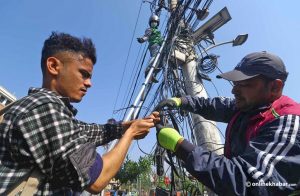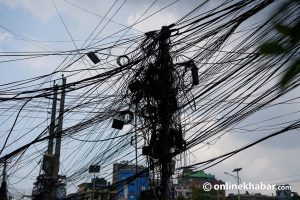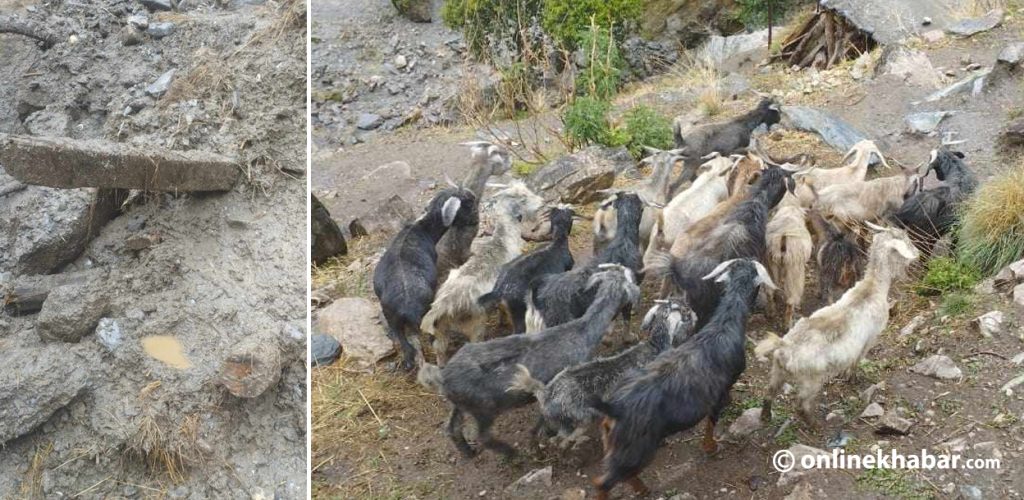Bikal Limbu, a student of St Xavier’s College in Kathmandu, has been using the internet service from a reputed internet service provider for the past six years. He pays around Rs 2,100 per month for a 40Mbps internet service.
“But, the internet is so slow these days that I cannot even attend online class sometimes,” Limbu says. He further adds he has given up online gaming as the internet lags almost every time and he gets too furious. He says he has been complaining for the past six months, but the issue still remains the same. “I called them so many times over this period that there is nothing new they can say to me,” he says.
Aishwarya Karki, a local resident of Kathmandu, who uses the internet service from another competitive company, says her ISP does not care too much about the customer’s queries. When she complained about her problem to the ISP, she was informed the support team would call her, but the call never came.
This is a recurring problem of most of the ISPs in Nepal and has been around for quite a long time now. Why do the ISPs not respond to their users? Why do the customers continue to complain forever? What can be the reasons?
1. Too many users

Internet usage has been growing more than ever at the moment. Nepal’s telecommunications regulator, Nepal Telecommunications Authority has informed that the number of internet users has increased by 5.8 million in just a year. The credit goes to the lockdowns that were imposed by the government as a measure to control the coronavirus spread.
With the increase in the number of users, the quality of the internet has apparently decreased gradually and it seems like the ISPs do not bother to solve the ongoing issues. Although the companies have captivating taglines like “Chhoyo ki chalyo” and “Chhito bhanekai”, the reality of their service seems to be very different from it. Users are often left furious and frustrated by their ISPs due to the service they are currently receiving. This has led them to rant about their problems online. The outrage of the customers towards their ISPs can be seen on the posts made by the ISPs on their social media pages.
Because of a high number of users, the ISPs are unable to manage their systems properly. The technical aspect, as well as the human resources, should have been matched accordingly, but this does not seem the case at the moment. The technical teams are not available as they once used to be. One could easily enquire to the company representatives about their problems back then, but now the users have to call multiple times just to reach them.
In many cases, the tickets issued are also cancelled without solving the users’ problems and even without notifying them. The hefty amount the users pay for the service and maintenance seems to be a joke as the users are not getting the services they should from the ISP.
2. Focus on expansion, not quality

While most popular ISPs in Nepal now are claiming their nationwide reach, it seems that they are only focusing on the reach and not on the quality.
With the claim of a country-wide reach and getting several thousands of customers’ subscriptions on their network, it seems the focus is solely on increasing the quantity of the users but not backing up with the quality. This is one of the major factors behind the problems that internet users are facing from the ISPs these days. ISPs are not to be solely blamed though, as the concerned authorities have also failed to provide the required laws and infrastructures for quality growth.
3. Lack of proper infrastructure

One of the major issues for the slow internet service in the country is the lack of proper infrastructure. The unmanaged jumbles of internet cables on the utility poles are pretty much visible to everyone. The Kathmandu Post quotes Sudhir Parajuli, the chairperson of the Internet Service Providers’ Association Nepal, to say 20 per cent of the complaints are due to the existing infrastructure like electricity poles, which are owned by the Nepal Electricity Authority, or the underground optical fibre cables. The infrastructure seems to lack way behind whereas the use and reach of the internet are growing every day.
4. Lack of technical human resources

As the use of the internet grows, the ISPs should have expanded the size of their phone numbers. The number of human resources required seems to be lacking.
The internet could be slow in the past also, but the human resources were prompt to arrive at your doorsteps to solve your issue. At the moment, this is not the case. The teams take up to a week to visit the customers these days.
One of the technicians of a reputed ISP says his team has been working way more than it used to because of the increase of the users. More than half of the problems would have been solved if the ISPs had the required people to solve the issues.
5. Heavy social media sites getting popular

Many of the users are mostly engaged in video playing apps like YouTube and TikTok, and the trend is ever-increasing. Apps and websites that contain videos consume more bandwidth than other websites. As the number of video watchers goes up, the network traffic gets heavier, which the ISPs cannot handle efficiently.
6. Lack of solid laws

Specific laws and regulations regarding the quality and service of the internet in Nepal are lacking. There should have been a proper law that both ISPs and consumers could follow and take action against each other if necessary. The laws are necessary because there are many cases where the customers feel cheated by their ISPs. The customers argue they are not being provided with the promised bandwidth by the ISPs. Proper regulations and laws can address all of them. Looking at the current scenario, this might be the right time for the government to step up.


























